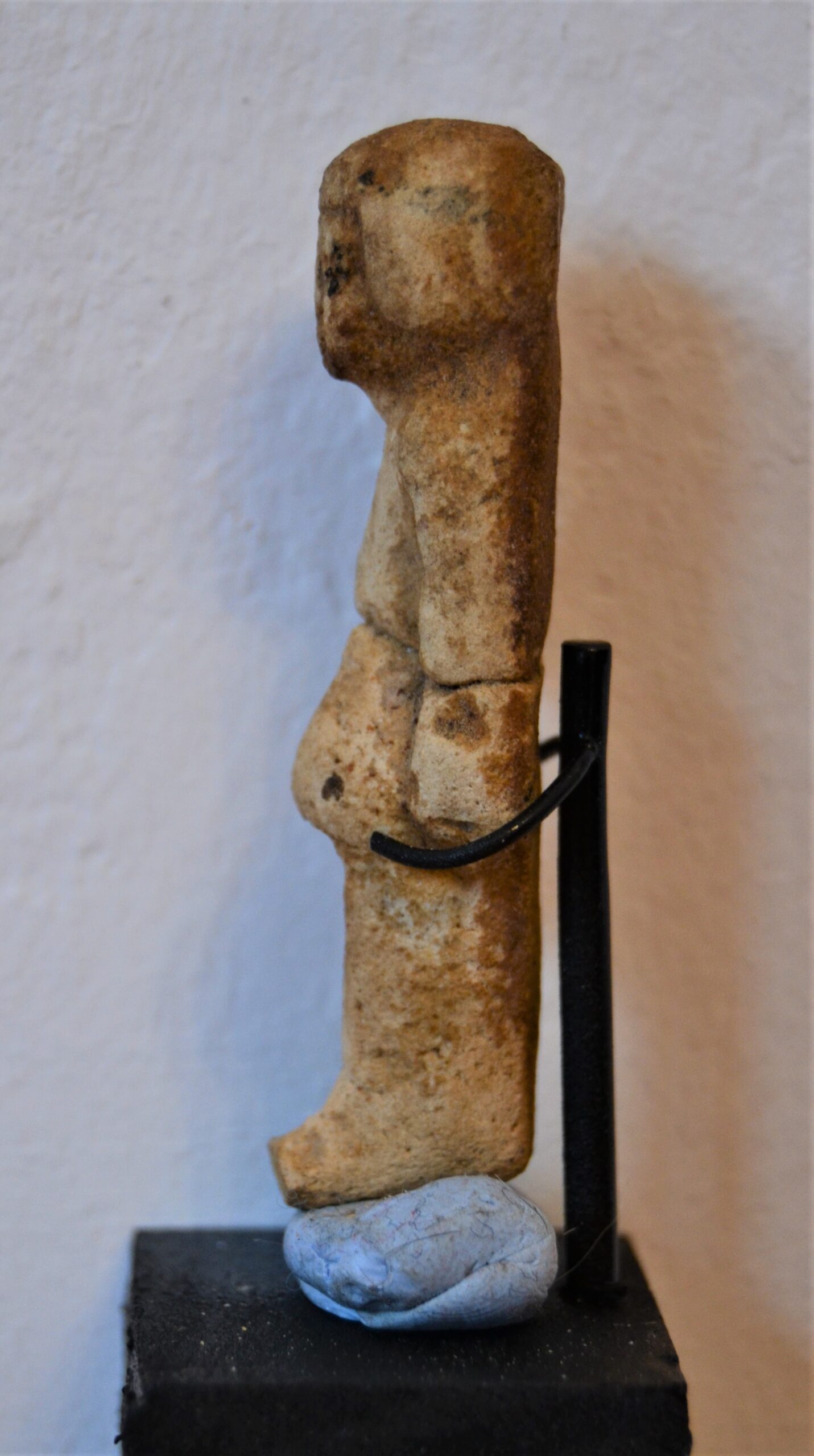Description
Name owner: Illegible
Title owner: Illegible
Dimensions (hxwxd): 6.5 x 2.0 x 1.5 cm
Translation hieroglyphs: Illegible
Preservation: Broken in the middle, faience worn.
R-R: NA
Provenance: Unknown. Acquired in the 1960’s by a collector, sold at Pax Romana in 2021. Currently in a Spanish collection.
Comments: Shabti of an overseer, dressed in the typical triangular kilt of everyday clothing. Short round wig with traces, in front, of the seshet headband. Right hand bent at the waist holding the typical whip of the overseer. The left hand straight at the side of the body. The face appears with little relief and traces of black paint highlighting the eyes, nose and mouth. The remains of the inscriptions cannot be translated.
What is very rare is the presentation of the left leg being more advanced than the right, in striding position. Striding shabtis only seem to have appeared in a very narrow window of time. Although in the Late Period amulets are often demonstration a God or Goddess in striding position, Late Period shabtis are always mummy form.
Two owners of which the dating is more or less known that have shabtis in such a striding position are the shabtis of Mehyt-Weshket (D), who lived somewhere between 943 and 887 BC) and those of Osorkon II (who reigned 874-850 BC). Taking into account that the overseers of both Mehyt-Weshket (D) and Osorkon II have a round wig, it is safe to assume that the shabti can be dated to the 22nd dynasty, with perhaps an expansion up to and including the 25th Dynasty.
Other shabtis with striding positions are known for Osiris-Anhh (published by Schlogl and Amen-em-Hat (published by Schneider), both with the inscription on the back and the arm on the other side of the body. See additional pictures.









